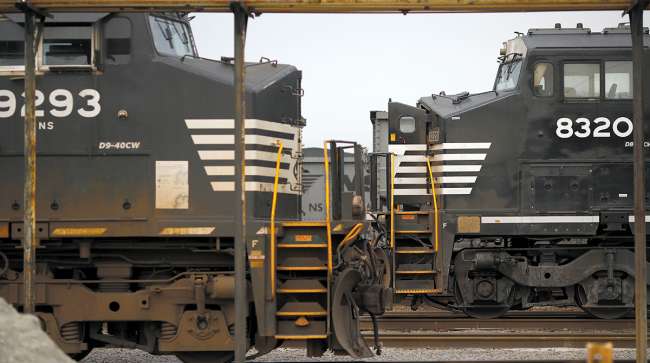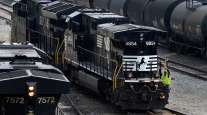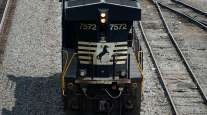Staff Reporter
Norfolk Southern Posts Increase in Earnings, Revenue for Q2

[Stay on top of transportation news: Get TTNews in your inbox.]
Norfolk Southern Corp. saw increases in profit and revenue in the second quarter, the Class I railroad reported July 28.
The Norfolk, Va.-based company posted net income of $819 million, or $3.28 a diluted share, for the three months ending June 30. That compared with $392 million, or $1.53, during the year-ago-quarter. Total railway operating revenue increased by 34% to $2.8 billion from $2.09 billion.
The results exceeded expectations by Wall Street analysts, who had been looking for $2.94 per share and quarterly revenue of $2.75 billion, according to Zacks Consensus Estimate.
“Building upon our momentum to start the year, our team delivered another record-setting quarter as dramatic improvement in both revenue and volume, up 34% and 25% respectively, outpaced an 11% growth in expense,” CEO James Squires said during a call with investors July 28. “Our performance in the quarter also improved sequentially in a number of ways.”

Squires
The results include second-quarter records for net income and earnings per share as well as all-time records for operating income and operating ratio (58.3 in the quarter).
“We are even more confident about growth for the balance of this year,” Squires said. “We now expect revenue to be up approximately 12% year-over-year. Strength in our consumer-oriented and manufacturing markets will drive the majority of the growth, and the near-term upside in coal markets will provide more of a lift this year than previously expected, though the market remains challenged in the long term.”
Railway operating revenue includes merchandise, intermodal and coal shipment categories. Merchandise increased 29% to $1.68 billion from $1.31 billion during the same time last year. Intermodal increased 41% to $801 million from $569 million. Coal operations climbed 52% to $318 million from $209 million.
“In the second quarter, we showed sequential improvement in terminal dwell and train velocity after we got through the severe winter weather in the first quarter,” Chief Operating Officer Cindy Sanborn said. “However, our progress was uneven and we lost ground in June in part due to several discreet, but geographically impactful, operating disruptions. We aren’t satisfied with our service levels, and we are working extremely hard to seize the opportunity [precision scheduled railroading] presents to recover faster from disruptions.”
Norfolk Southern was able to handle a 25% year-over-year volume increase despite an 8% decline in its workforce and a 1% decrease in active locomotives. The company credited this to operating discipline driven by improved productivity and a structurally lower operating cost base. Improvement in train size also allowed the company to absorb more business.
“We resumed our improvement in July,” Sanborn said. “We are committed to continuing to improve service levels and running a faster railroad. Not just because a faster railroad is a lower-cost railroad, but also because speed generates capacity for us to take on additional traffic within our existing train network.”
Norfolk Southern by Transport Topics on Scribd
Sanborn added that during the quarter the company worked to overcome significant volume changes by focusing on the consistency and productivity in yard and local operations. That has involved equipping field managers and deploying technology to better measure the work of yard and local crews. She noted this helps improve operating costs and service consistency.
“Local operations scheduled and properly sized volumes enable us to be more predictable to our customers and move cars quickly,” Sanborn said. “Having a higher balance of crews assigned to road train service while creating capacity within the terminal through process enhancements makes us nimble, [as does] responding to market changes and reducing our fixed costs.
“Local service is at the core of our service product, and these changes are designed to improve that product. So far, we have reduced the cost per yard and local crew 7% versus last year.”
Want more news? Listen to today's daily briefing below or go here for more info:




